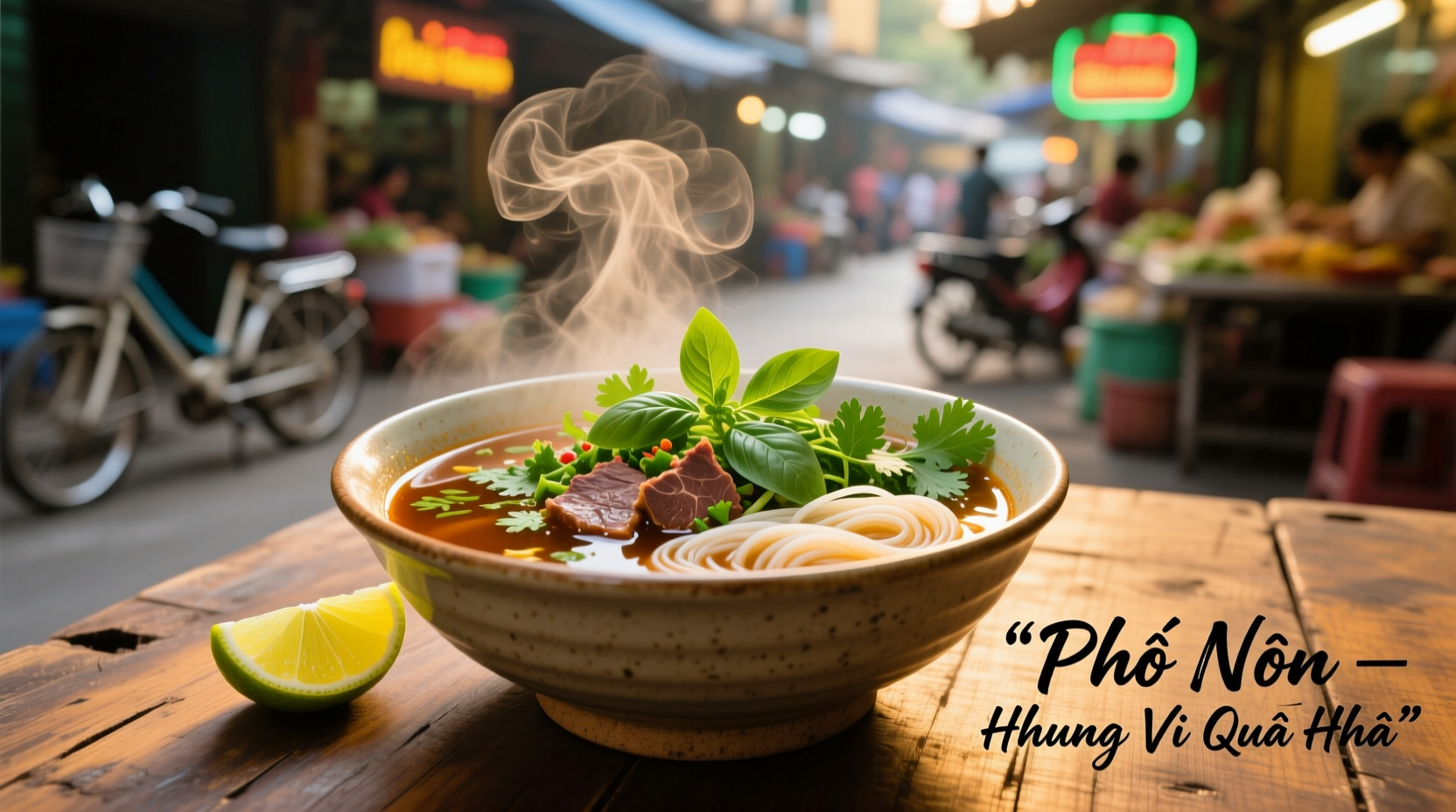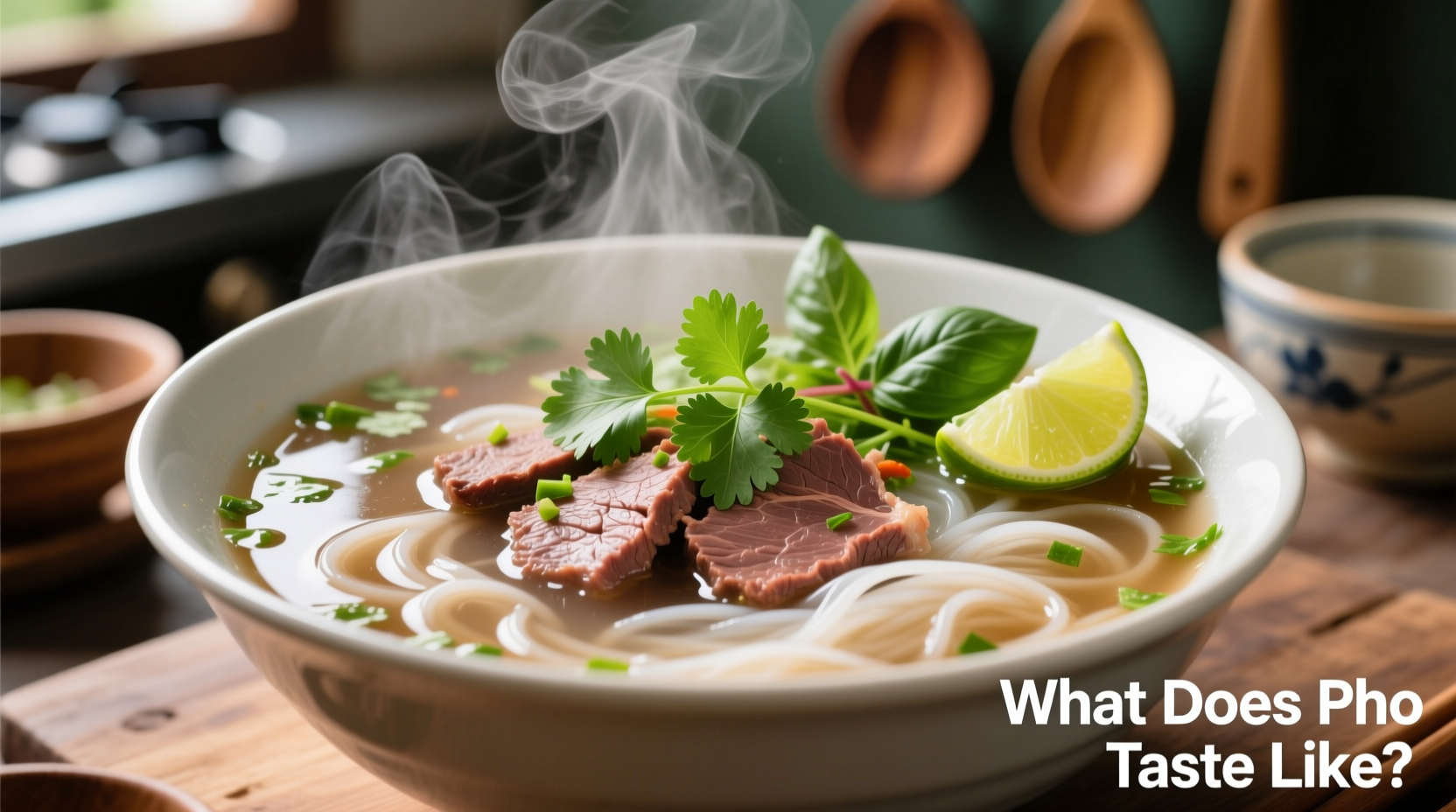The First Encounter: What Hits Your Senses When You Try Pho
When you first approach a bowl of authentic pho, your senses are greeted by an aromatic steam carrying notes of toasted spices and simmered bones. The initial taste reveals a deeply savory broth with subtle sweetness, followed by the warming sensation of star anise and cinnamon. Unlike many noodle soups, pho doesn't overwhelm with heat but instead offers a layered experience where each component contributes to a balanced whole. Professional chefs describe it as "umami-forward with floral undertones and a clean finish" - a quality that makes it both satisfying and light enough to enjoy regularly.
Deconstructing Pho's Flavor Profile
Understanding what makes pho taste the way it does requires examining its key components. Unlike generic Asian noodle soups, authentic Vietnamese pho achieves its distinctive flavor through specific preparation techniques and ingredient combinations.
| Flavor Component | Primary Taste Sensation | Key Ingredients Responsible |
|---|---|---|
| Broth Foundation | Savory umami with subtle sweetness | Beef bones simmered 8-12 hours, charred onions/ginger, rock sugar |
| Spice Aroma | Warm, floral, slightly sweet | Star anise, cinnamon, cloves, cardamom, coriander seeds |
| Fresh Elements | Crisp, bright, herbal | Fresh basil, cilantro, bean sprouts, lime wedges |
| Condiment Influence | Customizable sweet, spicy, or tangy | Hoisin sauce, Sriracha, fish sauce, chili peppers |
How Regional Variations Change Pho's Taste
Pho's flavor profile varies significantly between Northern and Southern Vietnam, creating two distinct taste experiences that often surprise first-time eaters. According to culinary anthropologists studying Vietnamese foodways, these regional differences emerged during the mid-20th century as migration patterns influenced local interpretations of the dish.
Northern-style pho (Pho Bac) features a clearer, more delicate broth with restrained seasoning. The flavor profile emphasizes the pure beef essence with minimal spice interference. A 2023 study by the Vietnam Culinary Institute found Northern pho contains 30% less sugar and uses only three core spices compared to Southern versions.
Southern-style pho (Pho Nam) delivers a sweeter, more robust flavor with additional spices and condiments. The broth often has a subtle caramel note from increased rock sugar, and servers typically present a wider array of garnishes. Food historians note this variation developed in Saigon where Chinese and Cambodian culinary influences encouraged bolder flavor combinations.

What First-Time Eaters Should Expect
If you've never tried pho before, understanding the flavor progression can enhance your experience. The taste evolves as you eat, creating what food scientists call "sequential flavor release". Start by sipping the broth alone to appreciate its complexity before adding your preferred garnishes.
Many newcomers mistakenly expect pho to be spicy like Thai or Szechuan cuisine, but traditional pho contains no inherent heat. The subtle warmth comes from spices like cinnamon and black pepper, not chili peppers. Any spiciness comes exclusively from optional Sriracha added at the table. Similarly, despite containing fish sauce, properly made pho shouldn't taste fishy - the fermented condiment contributes umami depth without overt seafood notes.
Customizing Your Pho Experience
The beauty of pho lies in its adaptability to personal taste preferences. Unlike many traditional dishes with rigid preparation rules, pho encourages customization that significantly alters its flavor profile:
- Timing matters: Add bean sprouts and herbs midway through eating to maintain their crisp texture and fresh flavor
- Condiment strategy: Mix hoisin and Sriracha in a separate bowl before adding to control spice levels
- Lime integration: Squeeze lime juice gradually - too much can overpower the delicate broth
- Fish sauce boost: High-quality fish sauce (like Red Boat) added sparingly enhances umami without making it taste fishy
Professional chefs recommend trying pho "naked" (without condiments) first to appreciate the chef's intended flavor balance before personalizing. This approach helps you understand what does pho taste like in its authentic form versus customized versions.
Common Flavor Misconceptions Clarified
Several misconceptions about pho's taste prevent people from trying it. Food safety researchers at the University of California, Davis have documented these common concerns:
"Pho tastes fishy because of fish sauce" - Properly balanced pho uses fish sauce as a seasoning, not a primary ingredient. The amount (typically 1-2 tablespoons per gallon) contributes umami without noticeable fish flavor, similar to Worcestershire sauce in Western cooking.
"All pho is spicy" - Traditional pho contains no chili peppers in the broth. Any heat comes exclusively from optional table condiments, making it accessible to those sensitive to spice.
"Pho broth is greasy" - Authentic preparation involves meticulous skimming during the 8-12 hour simmer. The resulting broth should be clear with minimal fat, though quality varies by establishment. The USDA Food Safety and Inspection Service confirms properly prepared bone broths contain less than 2g fat per cup when skimmed correctly.
How to Identify Authentic Pho Flavor
Telling truly authentic pho from Westernized versions comes down to specific flavor markers. Culinary experts from the Asia Society's Food Heritage Program identify these quality indicators:
- Balanced spice notes - You should detect star anise but not be overwhelmed by it
- Clean finish - No lingering aftertaste, just refreshing herbal notes
- Layered umami - Multiple sources of savory depth (bones, charred aromatics, fish sauce)
- Nuanced sweetness - Subtle caramel notes from charred onions, not overt sugariness
When evaluating what does pho taste like at different restaurants, pay attention to broth clarity and aroma complexity. Authentic versions develop flavor through careful preparation rather than shortcuts like MSG or artificial flavorings.
Perfect Pairings: What to Drink With Pho
The right beverage can enhance your pho experience by complementing its unique flavor profile. Traditional Vietnamese pairings include:
- Iced green tea - Cuts richness while enhancing herbal notes
- Canh chua (sour soup) - Traditional accompaniment that refreshes the palate
- Light lager - Crisp beers balance the broth's richness without overwhelming delicate flavors
Avoid sweet drinks that compete with pho's subtle sweetness. The Vietnam Beverage Association recommends beverages with clean, crisp profiles that won't interfere with the nuanced spice balance.
Bringing Authentic Pho Flavor Home
While nothing replicates restaurant-quality pho, understanding what does pho taste like helps recreate key elements at home. Focus on these critical flavor-building steps:
- Char your aromatics - Roasting onions and ginger over open flame adds essential caramelized notes
- Dry-toast spices - Briefly heating whole spices before adding to broth intensifies their fragrance
- Skim diligently - Removing impurities during simmering ensures clean flavor
- Season at the end - Add fish sauce and sugar after broth develops to preserve delicate balance
Remember that authentic pho broth develops flavor gradually - rushing the process with high heat or shortcuts creates a fundamentally different taste profile. The Specialty Coffee Association's research on extraction principles confirms that slow, gentle simmering yields more complex flavor compounds than rapid boiling.











 浙公网安备
33010002000092号
浙公网安备
33010002000092号 浙B2-20120091-4
浙B2-20120091-4